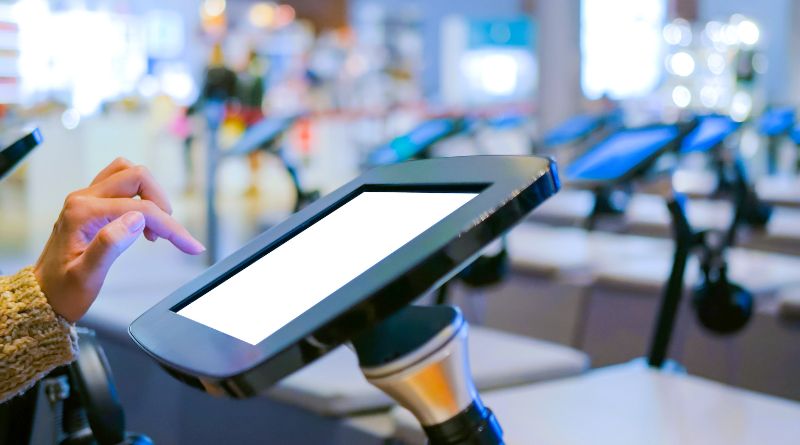Seven Kiosk Types You Will Need to Understand in 2024
A company may stay up to date with the digital revolution with the help of an interactive kiosk. Touchscreen kiosks have shown to be quite advantageous for companies that serve many industrial verticals. These self-service kiosks engage customers and provide a broad variety of features in addition to convenience.
Kiosks are unquestionably essential to a wide range of sectors. These interactive tools, which come with state-of-the-art technology, are completely changing the way companies choose to communicate with their clients. Customized kiosks provide organizations with solutions that have been created to meet their requirements. They do this by melding interactive components, branding, and functionality in a seamless manner to improve consumer interaction in a variety of settings.
We’ll explore seven different kinds of kiosks in this article that you should be aware of in 2024.
Overview
Self-contained kiosks provide consumers with access to a variety of services and information. Technology has grown quickly, and kiosks can now meet a wide range of commercial demands. These interactive devices also improve client engagement and provide flawless experiences.
Definition
A kiosk is an independent interactive device that lets customers trade, get information, and even engage with digital media. These devices typically consist of a touchscreen interface, an intuitive user interface, and other parts tailored to a certain kind of kiosk.
Kiosk Types
The seven distinct kinds of kiosks that companies, including you, should be aware of are as follows:
1. Interactive kiosks with touchscreens
Not only is the interactive touchscreen kiosk the most popular kind, but it is also the most adaptable. These gadgets include a large touchscreen display that lets users read information, make choices, and interact with material. The hotel, retail, entertainment, and healthcare sectors make substantial use of these kiosks.
2. Kiosks for Self-Service Payment
Self-service payment kiosks have undoubtedly been quite popular in the last several years, particularly in the retail and food service sectors. One of the nicest things about them is that they let users pay for their goods conveniently and securely without any help from cashiers.
Interactive digital kiosks may also shorten wait times and streamline the checkout procedure. This is due to the fact that they provide clients with a range of choices, including card payments, mobile wallets, and cash acceptance. Kiosk apps provide user-friendly interfaces and condensed features that expedite customer interactions and improve productivity in environments that are public. They may be used as self-checkout kiosks or as educational displays, completely changing how users interact with technology while on journeys.
3. Educational Displays
As the name implies, an informative kiosk is a self-service device that gives the user information. This information is easy for your users to understand in addition to being clear. Though it should be simple to grasp, the material is presented in enough depth to prevent the need for an adviser.
Informational kiosks are often seen in public spaces such as museums, airports, tourist attractions, and other locations. This gadget also offers information about locations, timetables, maps, and other helpful features. They help users effectively navigate and explore their environment.
4. Signage Kiosks
Helping people navigate difficult areas is another kind of interactive kiosk. These consist of commercial centers, hospitals, and huge event spaces. Wayfinding kiosks not only provide customers interactive maps and instructions, but they also give directions to certain sites. In this manner, they guarantee that guests arrive at their intended locations hassle-free.
5. Kiosks for Digital Signage
Digital signage kiosks are unquestionably a powerful tool for marketing and advertising. These kiosks have colorful screens that show out news, promotions, or adverts. When positioned strategically in high-traffic locations, they successfully convey targeted messages and actually grab onlookers’ attention.
6. Shop Kiosks
Retail kiosks are definitely changing the shopping experience by providing self-service choices and expanding the companies’ reach. These gadgets are available in shops, shopping centers, and even on the streets.
They provide clients access to inventory details, tailored suggestions, and items. These outdoor interactive kiosks allow businesses to increase revenue, increase their visibility, and enhance client interaction.
7. Kiosks for Virtual Reality
Users may engage in immersive and engaging experiences using virtual reality (VR) kiosks. With the assistance of VR headsets and controllers, these gadgets allow users to explore 3D surroundings or go to virtual worlds. Virtual reality kiosks are used for gaming, entertainment, and education, and they provide users memorable and distinctive experiences.
In summary
In 2024, kiosks will still be analyzing consumer experiences in a variety of sectors. Whether they are interactive touchscreen kiosks, self-service payment kiosks, instructional kiosks, navigation kiosks, digital signage kiosks, retail kiosks, or virtual reality kiosks, these devices are influencing how services are delivered and how customers interact with businesses in the future.
Kiosk digital signage is a subtle but powerful presence in public areas at a time when technology is ingrained in our everyday lives. The way data has been distributed has been quietly modified by these little digital displays, which have also created an ambient atmosphere that gently boosts our experiences.
Imagine taking a leisurely walk through a busy airport or a lively mall. Kiosk digital signage is an understated source of information among the disorganization. Its colorful display easily directs travelers or clients along their path while subtly providing important updates, airline schedules, or deals.
The ability of kiosk digital signage to fit in with a variety of scenarios is one of its most appealing features. These digital displays meld in with the scenery whether they are placed in a corporate office lobby, a museum, or a university campus. Their understated presence improves the overall feeling of the room by fostering conversation rather than acting as a disruption.
Moreover, kiosk digital signage has become a vibrant story-telling and interaction medium. These exhibits may inspire, educate, and amuse audience with their dynamic features and engaging images. Their possibilities are as varied as the places they occupy, ranging from presenting chronological histories in institutions to emphasizing campus happenings at institutions of higher learning.


